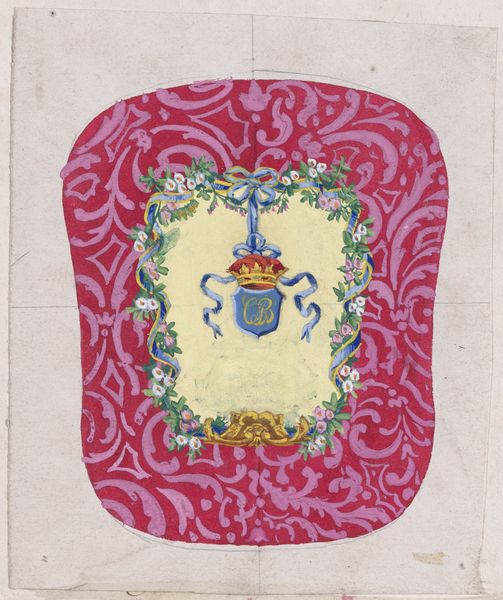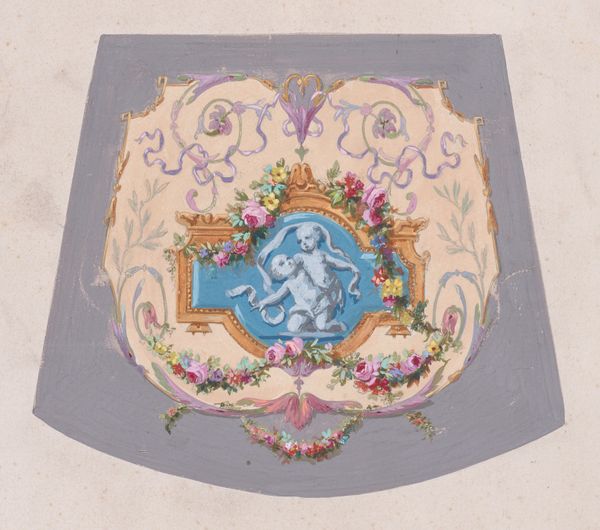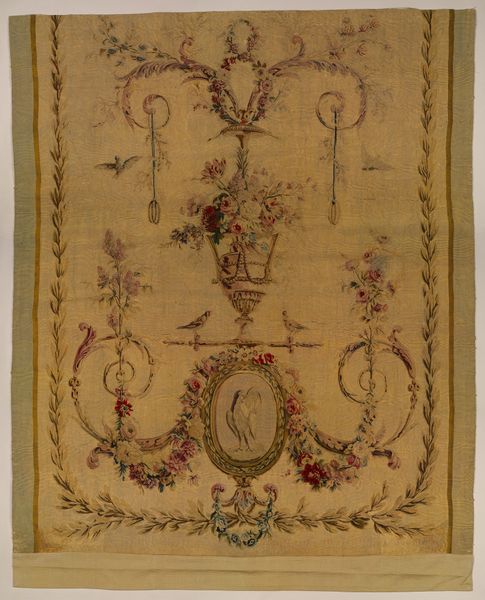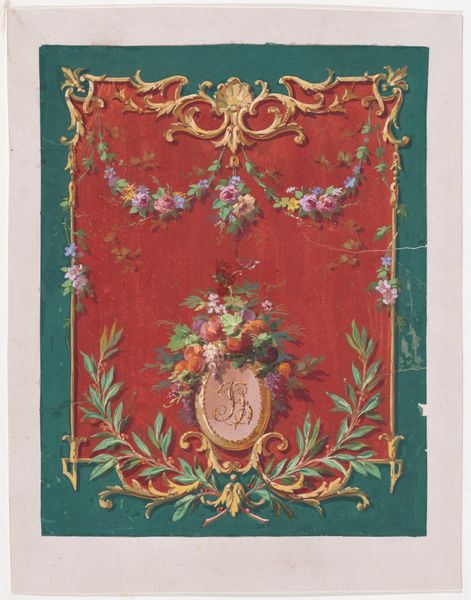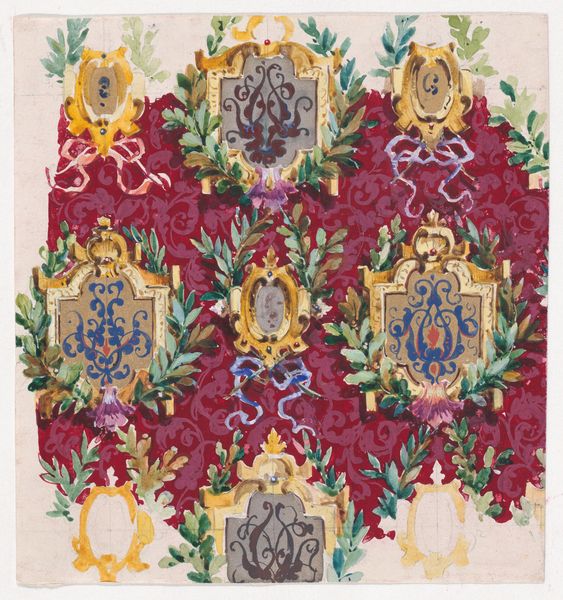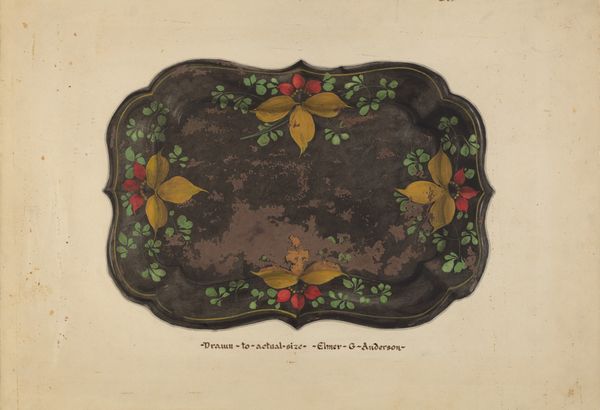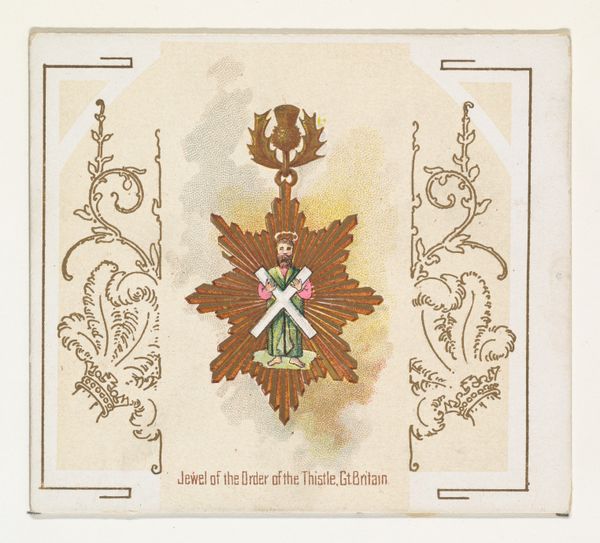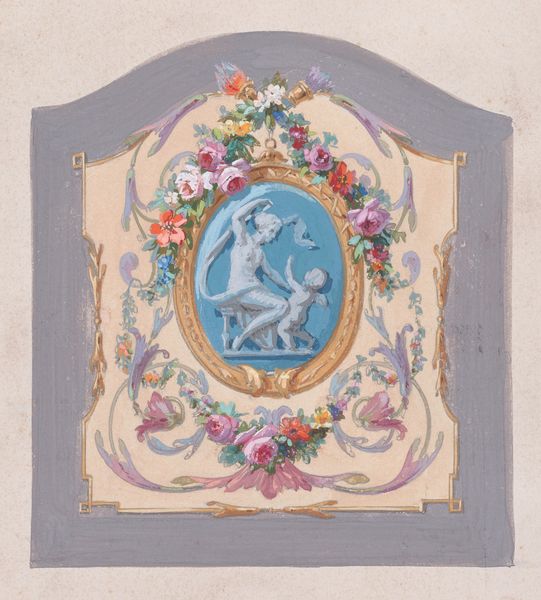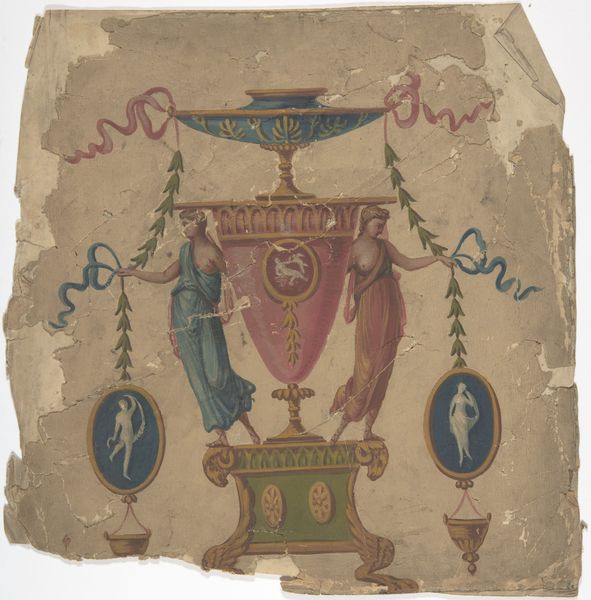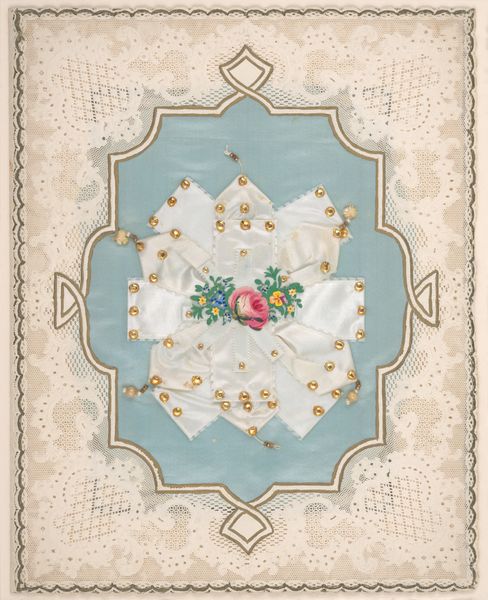
Design for a Chair Back Cover with an Ornamental Frame Formed by a Garland of Leaves and Flowers with an Interlacing Ribbon that Forms a Bow from which a Crown Motif with Monogram Hangs 1870 - 1900
0:00
0:00
drawing, coloured-pencil, print, watercolor
#
drawing
#
coloured-pencil
#
water colours
# print
#
arts-&-crafts-movement
#
watercolor
#
coloured pencil
#
decorative-art
Dimensions: Sheet: 6 3/16 × 6 1/4 in. (15.7 × 15.9 cm)
Copyright: Public Domain
Curator: The design we’re looking at dates from between 1870 and 1900. It’s a design, possibly for embroidery or petit point, titled “Design for a Chair Back Cover with an Ornamental Frame Formed by a Garland of Leaves and Flowers with an Interlacing Ribbon that Forms a Bow from which a Crown Motif with Monogram Hangs,” currently housed in the collection of the Metropolitan Museum of Art. It is a watercolor and colored pencil work. Editor: My first impression is that this is simultaneously delicate and aspirational, that it really leans into ornament and heraldry. The washes of color are just lovely. Curator: It absolutely speaks to the visual language of aspiration. I’m curious about the likely commissioner; the monogram hints at a very specific buyer. One of the more fascinating things is to consider this within the wider context of Victorian design and manufacture, in particular the labour needed to realize such a design in, say, petit point, with countless tiny stitches, points to a social context of available domestic labour. Editor: Absolutely. The piece gestures at an embrace of handcraft as a means of production; the work here resists industrialization in its conception, although its aesthetic might be mass-produced through prints, as indicated in the medium tag. The crown and floral frame suggest status, but rendered by hand, pointing perhaps to bourgeois aspirations of aristocracy, if that makes sense? Curator: Entirely. I think it gets at a kind of symbolic yearning that was deeply enmeshed within that social class during that time. I keep considering the person who might have been laboring over the actual chair back. There’s something really potent in recognizing all those hands contributing to this vision. Editor: Yes, definitely thinking about all of those invisible hands. It feels like a moment perfectly captured; a decorative object filled with social longing. Curator: Exactly, and I think interrogating the intent, the consumer, and the labor allows us to see beyond simply a pretty floral frame, allowing us to tease out the threads of its making and its social meanings.
Comments
No comments
Be the first to comment and join the conversation on the ultimate creative platform.

